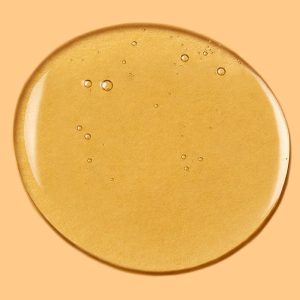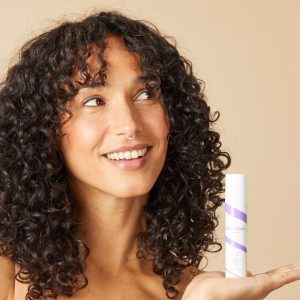Curly Girl Method Diary: Finger Detangling Versus Using a Brush
The Curly Girl Method (CGM) is most famous for its rules regarding ingredients in products. “No silicones, sulfates and parabens” have become a widespread rule that many people – both curlies and non-curlies – decide to follow. The Curly Girl Method has helped many become more aware of what ingredients are in their products and what different ingredients achieve.
The Curly Girl Method has many little-known rules regarding curl care outside of ingredients in products. A big rule of the Curly Girl Method is to finger detangle and to avoid brushes at all costs.
The reason behind is the rule is due to hair fallout that occurs from using a brush. Every time you brush your hair, strands fall out and end up on the brush. For many girls still in transition, the thought of running a brush through their already-weak strands seems too harsh. The Curly Girl Method does not single out curlies in transition for this rule, rather, they state it applies to all curlies at all stages of their journey.
The Curly Girl Method reasons that brushes can be too harsh for your hair and that fingers are much more gentle, therefore, brushes should be avoided and fingers should be used instead.
When it comes to textured hair, there are many different factors to consider. Different degrees of curliness, thickness, coarseness and density will impact how you care for your curls. The best way to discover what works for you is to try out different methods and see which you like best. In general, here are some pros and cons for brushes versus finger detangling.
Brushes
Pros:
- Much quicker than using your fingers to detangle
- Can be used for other purposes, such as brushing conditioner through your hair to ensure each strand is coated nicely
- Does a better job at detangling
- Smoothes out both big and small knots
Cons:
- Can be harsher on strands
- Can cause more fall out
Finger detangling
Pros:
- Can be less harsh than a brush
Cons:
- Still causes fall out
- Takes a very long time to detangle
- Not good at distributing product
- Very painful
- Easy to miss sections
- Only targets big knots, misses little knots
Trying both methods
I’ve tried both methods on my 3c hair and quickly came to a conclusion on which method I prefer. I found that the finger detangling method was just not compatible for my hair. I finger detangled for 2 months to put this method to the test. Even when finger detangling, I still had the same amount of fall out as I get on the brush. The difference was that on the brush fall out is much more noticeable, whereas on my hands, it wasn’t as noticeable because strands would rinse off and slip out of my fingers. Instead, on the brush the strands just gather until I take them out. The result is the appearance of more fall out, when it’s actually the same amount.
Putting fall out aside, I much prefer using a brush because it is quicker, less painful and does a better job at detangling. The biggest difference for me is product distribution. My strands were coated much more effectively using the brush. I was able to get a better cleanse and better condition in thanks to the way the brush distributes my shampoo and conditioner. This not only allowed me to have better results, but also to truly maximise my hair products and get the most out of them each usage.
Tips to reduce fall out and improve detangling
If you’re tossing up whether a brush is a good change for you, then consider implementing these tips to reduce fall out and make detangling a much better experience:
- Detangle every step of the way: condition before detangling. Detangle. Shampoo. Detangle again. Rinse shampoo. Apply conditioner and detangle again. This allows you to get the product in effectively and to coat each strand at every step.
- Use a brush designed for detangling. Not all brushes do a good job at detangling. I noticed a big difference once I started using the Tangle Teaser (pictured). The Tangle Teaser has reduced pain and sped up my detangling routine by a lot. It has almost halved how long it takes me to detangle.
- Deep condition regularly to keep your strands strong and healthy.
- Use balms and moisturising products to stop your hair from drying out during the week. When you do this, after wetting your hair you’ll notice it is super soft and silky thanks to the product you’ve put in during the week to keep it moisturised. A great balm to use is Alikay Naturals Botanicals Hair and Scalp Balm and a great moisturiser is CURLS Lavish Curl Moisturizer.
- Style with a leave in conditioner to provide lasting hydration. My favourites are Flora & Curl Rose Water & Honey Leave-in Detangler and CURLS Blueberry Bliss Reparative Leave In Conditioner (bonus: Blueberry Bliss collection has got protein in it to help also strengthen your strands).
The bottom line here is hydration. Always make sure you are on top of your hair’s hydration and that it doesn’t dry out. Dry hair becomes weak and easily breakable. Dry hair is also much harder to detangle. Trying to keep your hair silky soft will allow easier detangling.
From leave ins to deep conditioners – ready to advance your conditioning products collection? Check out our curated collection: Conditioned and Silky Soft.








